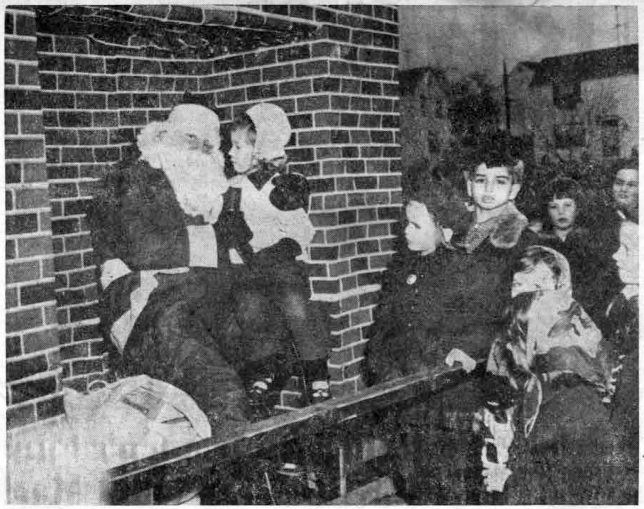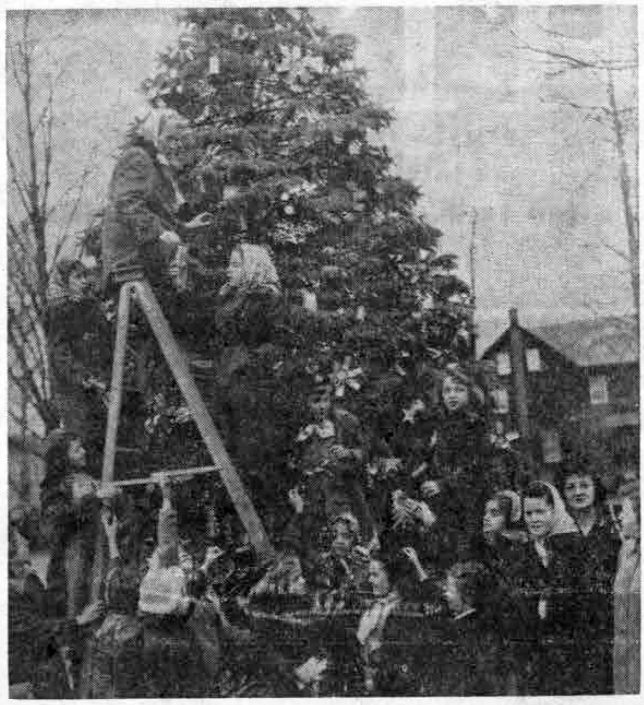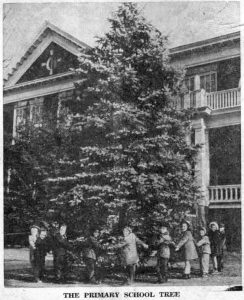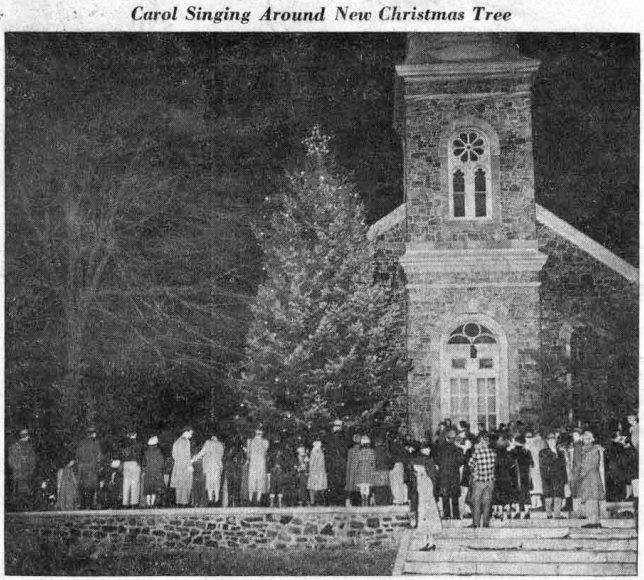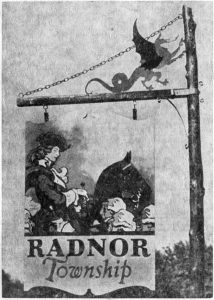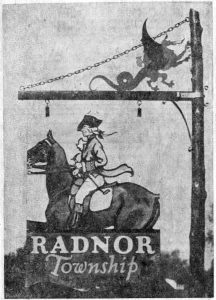While ALL Wayne has its community Christmas tree, as reported in last week’s column, North Wayne has its own tree, located on a spot that seems built to order for that very purpose – the triangular piece of ground in the center of the wide opening of Walnut avenue onto North Wayne avenue. Last Sunday, December 21, there was carol singing around this tree and a program of Christmas music arranged by Frank Felske.
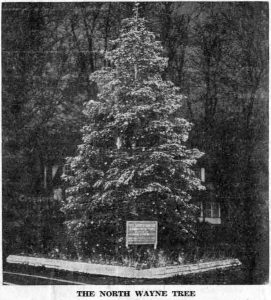 This is the second Christmas that the lights from this tree will have shone out onto Walnut and North Wayne avenues, the first street to be laid out back in the 1880’s in the section north of the Pennsylvania Railroad.
This is the second Christmas that the lights from this tree will have shone out onto Walnut and North Wayne avenues, the first street to be laid out back in the 1880’s in the section north of the Pennsylvania Railroad.
Sponsored by the North Wayne Protective Association, which financed its purchase, this beautiful Nordman fir was finally chosen by a committee from the Association, after a tour of all the nearby nurseries had been made. Even after a selection had been made at the Doyle Nurseries by one group, a second group was delegated to verify the choice.
After the Nordman fir was puchased it became a very personal belonging of the neighborhood. During the dry summer of 1952, members of the North Wayne Protective Association took turns watering it through pipes secured deep into the ground for that purpose.
The Christmas lights come on from a switch in the home of Mrs. Helen H. Breining on the south side of Walnut avenue. Water comes from a spigot in the yard of Dr. Lee Porter’s home, on the other side of the street – the Porter children call it “our tree”.
This permanent Christmas tree was preceded by a temporary one, a 60-foot fir which was blown down in the November, 1950, windstorm on the old McFadden place in Rosemont, then owned by Thomas A. Wood. In their eagerness to have a tree of some sort, members of the North Wayne Protective association went down to Rosemont in several cars to drag it up to the triangle in the middle of Walnut avenue.
The return trip was a hazardous one with the car on which the tree was loaded closely guarded by other cars to the rear. The route had to be a circuitous one since there were only a few corners which were wide enough to permit a turn.
Finally, however, the destination was reached, and the trunk of the tree was sunk into a big pipe provided by the township for that purpose. Some ten feet of the original hemlock had to be cut off to make the planting possible, and numerous branches were broken off in one way or another. Undaunted members of the tree planting committee then nailed the original branches back, or chose still others to be nailed in place. And then, several nights before Christmas of 1950, lights shone out from North Wayne’s first Christmas tree. Needless to say, this tree was a short-lived affair. But by Christmas 1951, the big hemlock was permanently in place. This year, for the second time, its lights twinkle in the darkness.
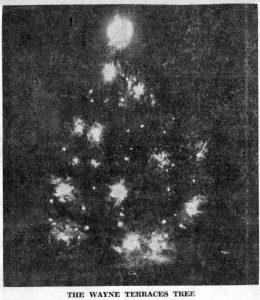 Now there is a brand new tree in the community – the one on Morningside Circle in Wayne Terraces. On Saturday afternoon Santa Claus arrived there in one of the shiny red fire engines of the Radnor Fire Company to seat himself on his throne beneath the tree. From there he distributed his gifts to all the children of the Terraces. This was followed by singing of carols.
Now there is a brand new tree in the community – the one on Morningside Circle in Wayne Terraces. On Saturday afternoon Santa Claus arrived there in one of the shiny red fire engines of the Radnor Fire Company to seat himself on his throne beneath the tree. From there he distributed his gifts to all the children of the Terraces. This was followed by singing of carols.
On Monday evening, December 22, the Rosemont Community Association had its fourth annual Christmas celebration on the grounds of the Rosemont School. A nativity scene near the Christmas tree formed the background for the carollers. In the spirit of giving rather than receiving those who came to the celebration brought gifts to the creche in the form of toys and of food.
And thus throughout Radnor township Christmas is being celebrated not only in its homes, but in gatherings throughout our community in the true spirit of “Merry Christmas to All”. It is this spirit that prevails in our community not only at the Yuletide season, but throughout the year – that spirit of true neighborliness.
And now Merry Christmas to all her readers from this columnist with an especial greeting to the increasing number of those of school age who are showing such interest in the history of Wayne and its surroundings. May we all spend another happy year together – your columnist in writing and you in reading!
Emma C. Patterson.
